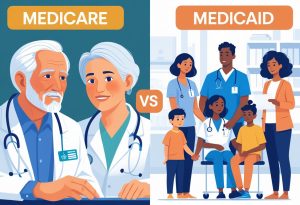Premium Caps, Shrinking Choices & Why It Matters More Than Ever
If you’ve been following the Medicare headlines lately, you’ve probably heard that big changes are coming to Medicare Part D — the drug coverage part of Medicare — in 2026. And if you’re feeling a little confused by it all, you’re not alone.
The government is rolling back a program that helped stabilize drug plan premiums in 2025. Meanwhile, more plans are disappearing, deductibles are rising, and consumers are left wondering, “What will my Part D plan cost next year?”
Let’s break it down — clearly and honestly — so you can make informed decisions before the next Annual Enrollment Period.
The Average Premium Is Rising — But the Cap Is Coming Off
In 2025, Medicare introduced a temporary program called the Part D Premium Stabilization Demonstration to protect consumers from skyrocketing drug plan premiums.
That program capped premium increases at $35/month (or $420/year) for most stand-alone drug plans. It was a helpful buffer for many, but here’s the catch.
- * In 2026, that protection is shrinking.
CMS (the Centers for Medicare & Medicaid Services) will only allow premiums to go up $50/year — if a plan stays in the demonstration. And not all plans will.
- Plans that aren’t participating in the demo can raise premiums as much as they want.
That means you could see increases of $60, $80 — even over $100/month — if your plan opts out.
What’s the Average Premium, Anyway?
- National Average Part D Premium (2025): $34.50/month
- New York Average Part D Premium (2025):$72.34/month (Source: CMS)
If you’re in New York like many of my clients, you’re already paying twice the national average. And with stabilization rolling back in 2026, we could see that number climb higher — especially for those who don’t shop around.
Deductibles Are Going Up Too
In 2026, the standard Part D deductible will increase to $615 — up from $545 in 2024. That means you’ll pay more out-of-pocket before your plan kicks in.
And remember: some plans have a deductible that applies only to certain drug tiers, while others apply it across the board.
Bottom line? Don’t assume your coverage works the same way next year. Even if your premium looks the same, your cost-sharing could be totally different.
Plan Choices Are Shrinking — Again
In 2024, there were 709 standalone Part D plans (PDPs) nationwide. In 2025, that dropped to 524.
That’s a 26% reduction in plan availability.
Insurers like Aetna and Humana eliminated multiple plans, including top sellers like SilverScript SmartSaver and Humana Walmart Rx Value. Some consumers were automatically moved to higher-cost options unless they chose something else.
- * And
don’t expecta rebound in 2026.
With fewer insurers offering multiple PDPs, rising costs from new Part D reforms,
and smaller government subsidies, we’re likely to see even fewer standalone
drug plans next year.
That meansless choice — and more reason to compare carefully.
What About Extra Help or Low-Income Subsidy (LIS)?
Even if you qualify for Extra Help, you’re not immune to changes. Some LIS benchmark plans no longer qualify, meaning you could owe a premium even if you didn’t before.
Make sure to review your coverage, even if you’ve had a $0 plan in the past.
What You Should Do Next
Here’s how to stay ahead of the changes:
- Don’t auto-renew without reviewing your options.
- Check your plan’s 2026 premium, deductible, and drug formulary.
- Know whether your plan is still in the stabilization demo.
- Watch for letters from CMS or your plan carrier.
- Work with an independent agentwho can shop all the plans — not just one.
Let’s Make This Easy
I’ve been helping Medicare clients navigate their options since 2007 — and I take pride in making this stuff simple, honest, and stress-free.
Whether you’re in New York or anywhere else in the country, I can:
- Review your current Part D plan
- Compare your options for 2026
- Help you avoid costly surprises
- Make sure you don’t overpay for your medications
Don’t Wait Until It’s Too Late
The Annual Enrollment Period (October 15 – December 7) is your one chance to make a change.
If you wait until your first refill in January, it could be hundreds of dollars too late.
- Call me at 631-358-5793
- Or schedule your free review at paulbinsurance.com
Final Thought:
The rules are changing. Plans are disappearing. Costs are rising.
But the right guidance makes all the difference.
Let’s find a plan that fits — and gives you peace of mind heading into 2026.






